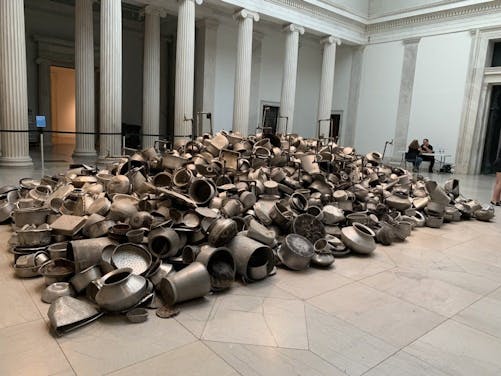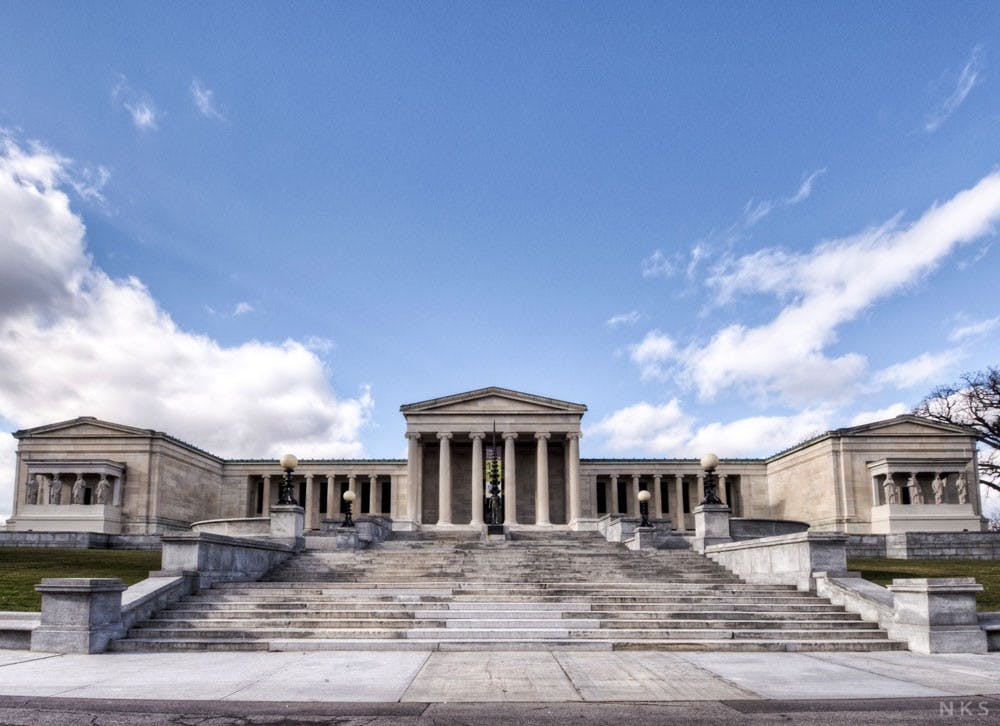The Albright-Knox Art Gallery will close its doors to the public for the next two years on Monday.
The closure will allow workers to construct a new building on the art museum’s north end. This is the Albright-Knox’s third major expansion in 114 years since it’s had a permanent location and the gallery expects the various additions to add 30,000 square feet of museum space. The Albright-Knox intends to open a satellite branch in Buffalo’s east side in January. Professors and community members have contrasting opinions on how the museum’s absence will affect Buffalo’s art scene.
The expansion plans include an underground parking space, a new entrance to the museum on the east wing of the 1962 building, an “Indoor Town Square” (a cover over the “open-air Sculpture Garden”), a new education wing and a bridge connecting the new building to the 1905 building.
The Albright-Knox’s board members said the expansion is necessary to “properly house the museum’s growing collection, mount rotating special exhibitions and present a dynamic range of complementary educational programs,” according to a press release.

"This is not a fountain" installation by Subodh Gupta at the Albright-Knox Art Gallery.
On Jan. 17, the Albright-Knox expects to open its satellite location –– Albright-Knox Northland –– on 612 Northland Avenue. The new location will not display much of the museum’s permanent collection due to the lack of proper heating, humidity and HVAC conditions necessary to keep delicate artwork intact, according to Andrew Mayer, Albright-Knox’s communications coordinator.
“We’ll be showing the work of artists that don’t need such museum-grade conditions,” Mayer said.
Jake Barkan, a senior architecture major, wishes he’d taken advantage of the Albright-Knox earlier in his college career. Barkan had trouble familiarizing himself with downtown Buffalo without a car so he didn’t know about the museum until later on, once it already began plans to close down.
“It took me till last spring to finally visit the Albright-Knox, I wish I had known about it sooner,” Barkan said. “It’d be nice if UB kept a stronger relationship with it; a problem is it’s a bit inaccessible for those without cars.
Reinhard Reitzenstein, director of UB’s undergraduate art program and head of the sculpture program, is worried the Albright-Knox’s absence will hurt the department and the larger Buffalo art scene.
The department takes field trips to the museum regularly, so students “are exposed firsthand to some of the most exciting and relevant national and international works,” Reitzenstein said.
Additionally, Reitzenstein worries that Buffalo will no longer be able to attract the visitors who come to Buffalo for the Albright-Knox.
“Many people travel to Buffalo in order to experience the [gallery] and this will diminish over the two-year period,” Reitzenstein said. “Other art events will feel the reduction in attendance as well, I would think.”
Others are more optimistic about the closure. Shasti O’Leary Soudant, a graphic design professor, thinks the museum’s absence could inspire new artists and innovators in the community to take action.
“When something of that stature goes to ground there is a little bit of a vacuum left in its wake. It could possibly galvanize people into making more things happen locally,” O’Leary Soudant said. “I think the confluence between how artists react in the city, and [the way] the Albright is still going to work really hard to remain an active part of the community, will make the two years go by really fast.”
During construction, Albright-Knox employees will work at the Albright-Knox Northland, the Art Truck and an expanded Public Art Initiative, according to Mayer.
On Friday, the Albright-Knox will offer free admission to museum goers, as it does for each first Friday of the month.
The museum has already started relocating some of its permanent collection into storage, but 57 pieces from the permanent collection remain on display. The museum’s temporary exhibition –– “Dark Rooms, Solid Light” by Anthony McCall –– will remain on display through the closing weekend.
O’Leary Soudant is impressed by the exhibit and says it is “indescribable” and that students should experience it firsthand.
“He’s one of those artists who truly succeeds in making ineffable work, which means you can’t describe it, you have to experience it,” O’Leary Soudant said. “There is something about it that just reduces you to a child again. You have to see it if you haven’t already.”
Julian Roberts-Grmela is a features desk editor and can be reached at julian.grmela@ubspectrum.com and on Twitter @GrmelaJulian.

Julian Roberts-Grmela is a senior news editor for The Spectrum and an English and philosophy major. His favorite book is “White Teeth” by Zadie Smith and he hopes that one day his writing will be as good as hers.





